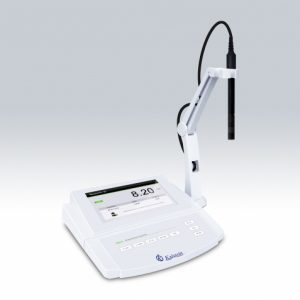It is important to note that there are different devices to measure these standards. In turn, the choice of these will depend on the use given to them in the laboratories. Its value lies in knowing the quality, physical and chemical characteristics of water.
In this sense, this quality can change and depend on different factors such as partial pressure of oxygen in the air, atmospheric pressure, water temperature, turbidity and whether there is pollution near the main source.
Therefore, the integration of dissolved oxygen meters and turbidity meters in the laboratory, whether for research, studies and analysis, measurement is an essential place, since there is nothing that can replace this important step.
Various Meter Performance
Generally, the appearance of water is the main aesthetic impact, so it is important to establish measurements to study the capacity it contains. That is why dissolved oxygen measuring equipment and turbidity meters are responsible for calculating and eliminating turbidity to effectively disinfect the water you want to be consumed.
Therefore, they have different performances, including:
- Dissolved Oxygen Meter: is an indicator to measure the self-purifying capacity of the water body. Dissolved oxygen in the water is consumed and takes little time to restore to the initial state, indicating that the water body has a strong capacity for self-purification or that contamination of the water body is not serious.
- Turbidity Meter: Turbidimeters are used to measure suspended particles of a liquid, showing values in NTU (Nephelometric Turbidity Unit.). They provide reliable, high-precision results. They detect light source particles for both ultra pure water and high turbidity water applications.
Applications and Uses of Meters
Dissolved oxygen meters are used to measure and control the oxygen content in the various points of the water circuit of steam boiler installations, to control possible corrosions due to the oxidizing power of oxygen. They also prevent corrosion of metals, as in heating systems, where one of the factors affecting the degree of corrosion is the percentage of oxygen present.
Another very important application is in fish farming, where the oxygen level must be continuously monitored to obtain optimal reproduction and avoid a high mortality caused by low oxygen levels. Also at nuclear power plants to measure oxygen in their heavy water.
On the other hand, turbidity meters or turbidimeters are applied to study the turbidity of water, and to eliminate it, it is necessary to subject the liquid to a series of treatment processes, such as coagulation, filtration and decanting.
This process is applicable in the sanitation sector, where water treatment systems and their determination combined with organic measurement, contributes to the dosing of coagulants, in addition to being an important parameter in the monitoring of filter cleaning and a drinking standard.
Dissolved Oxygen Meter, Turbidity Meter Brand Kalstein
At Kalstein, we are able to meet the demands of our users in the selection of laboratory equipment. We offer the following Meters, corresponding to the YR series, among them:
Dissolved Oxygen Meter, has attractive features, such as 1 or 2 point calibration using air saturated water or zero oxygen solution. The salinity and barometric pressure compensations eliminate the measurement error. Automatic reading function The measurement end point is detected and locked.
To learn more about our team, check out our catalog at
Turbidity Meter, has functional elements, such as: 4 Selectable turbidity units, including NTU, FNU, EBC and ASBC. The TSS conversion factor ensures accurate measurement of total suspended solids. The auto read function detects and blocks a stable read.
For more information, visit HERE
At Kalstein, as manufacturers, we provide all the advice our customers need, so that their purchase is ideal, and at excellent prices.
Come visit us at HERE

